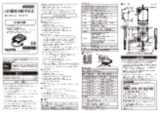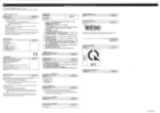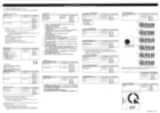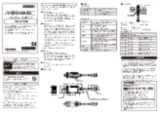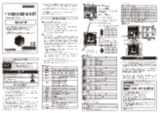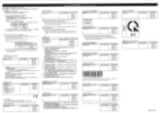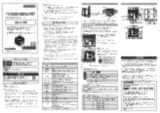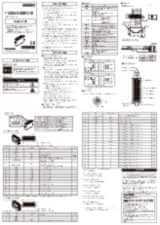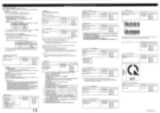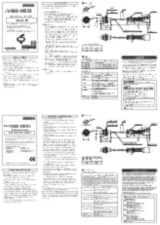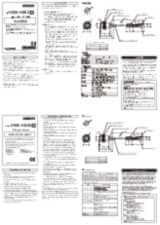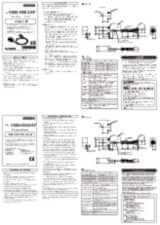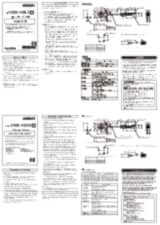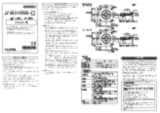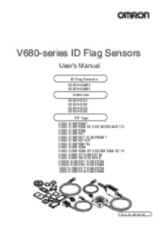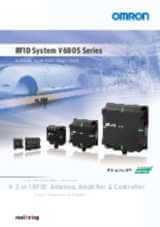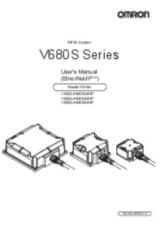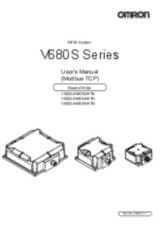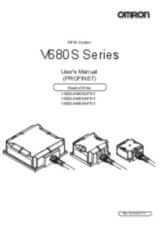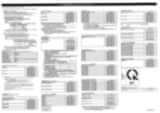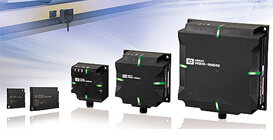
V680/V680S
Sistema RFID com processamento de materiais e montagem universal
O sistema RFID V680 é utilizado para efectuar o rastreio do fluxo do material nas linhas de montagem ou no processamento do material. O sistema, que está em conformidade com a norma ISO15693 e foi aprovado pelas entidades FCC, ARIB e CE, opera a 13,56 MHz e possui ligações de elevada resistência para ambientes rigorosos.
- Ligações compactas para montagem integrada
- Software de mapeamento de IDs fácil de utilizar
- Função de diagnóstico para configuração automática
Especificações e info encomendas
Ordering information
V680S-series
RF tag
| Type | Memory capacity | Appearance | Size | Installation | Order code |
|---|---|---|---|---|---|
| Battery-less | 2 kbytes |  |
40 × 40 × 5 mm | For flush mounting on metallic surface | V680S-D2KF67M |
| For flush mounting on nonmetallic surface | V680S-D2KF67 | ||||
 |
86 × 54 × 10 mm | For flush mounting on metallic surface | V680S-D2KF68M | ||
| For flush mounting on nonmetallic surface | V680S-D2KF68 | ||||
| 8 kbytes |  |
40 × 40 × 5 mm | For flush mounting on metallic surface | V680S-D8KF67M
2
V680S-D8KF6_M/V680S-D8KF6_ can be used
with V680S series Reader/Writer version 2.00 or higher. |
|
| For flush mounting on nonmetallic surface | V680S-D8KF67
2
V680S-D8KF6_M/V680S-D8KF6_ can be used
with V680S series Reader/Writer version 2.00 or higher. |
||||
 |
86 × 54 × 10 mm | For flush mounting on metallic surface | V680S-D8KF68M
2
V680S-D8KF6_M/V680S-D8KF6_ can be used
with V680S series Reader/Writer version 2.00 or higher. |
||
| For flush mounting on nonmetallic surface | V680S-D8KF68
2
V680S-D8KF6_M/V680S-D8KF6_ can be used
with V680S series Reader/Writer version 2.00 or higher. |
V680-series
RF tag
| Type | Memory capacity | Appearance | Size | Installation | Order code |
|---|---|---|---|---|---|
| Battery-less | 1 kbyte |  |
20 dia. × 2.7 mm | For flush mounting on nonmetallic surface | V680-D1KP54T |
 |
34 × 34 × 3.5 mm | For flush mounting on metallic surface | V680-D1KP66MT | ||
| For flush mounting on nonmetallic surface | V680-D1KP66T | ||||
| Environment-resistant type Battery-less |
 |
95 × 36.5 × 6.5 mm | For flush mounting on nonmetallic surface | V680-D1KP66T-SP | |
| High-temperature type Battery-less |
 |
80 dia. × t10 mm | For mounting with special attachment | V680-D1KP58HTN |
V680 series 8kbyte RF Tag (V680-D8KF67,V680-D8KF67M and V680-D8KF68A) can communicate with V680S series Reader/Writer. For details, refer to the User's Manual (Cat. No. Z339).
Reader/Writer
| Type | Appearance | Size | Network | Order code |
|---|---|---|---|---|
| Reader/Writer |  |
50 × 50 × 30 mm | EtherNet/IP | V680S-HMD63-EIP |
| PROFINET | V680S-HMD63-PNT | |||
 |
75 × 75 × 40 mm | EtherNet/IP | V680S-HMD64-EIP | |
| PROFINET | V680S-HMD64-PNT | |||
 |
120 × 120 × 40 mm | EtherNet/IP | V680S-HMD66-EIP | |
| PROFINET | V680S-HMD66-PNT | |||
 |
50 × 50 × 30 mm | Modbus TCP (TCP/IP) | V680S-HMD63-ETN | |
 |
75 × 75 × 40 mm | V680S-HMD64-ETN | ||
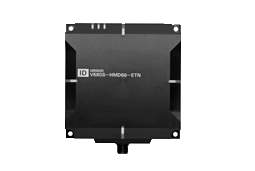 |
120 × 120 × 40 mm | V680S-HMD66-ETN |
RF tag attachment
| Type | Appearance | Order code |
|---|---|---|
| For the V680-D1KP66T |  |
V600-A86 |
| For the V680-D1KP58HTN |  |
V680-A80 |
| For the V680-D1KP54T |  |
V700-A80 |
Cable
| Type | Appearance | Length | Order code |
|---|---|---|---|
| Special connector – RJ45 | 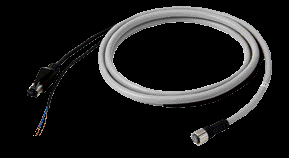 |
2 m | V680S-A41 2M |
| 5 m | V680S-A41 5M | ||
| 10 m | V680S-A41 10M | ||
| Special connector – Loose wires |  |
2 m | V680S-A42 2M |
| 5 m | V680S-A42 5M | ||
| 10 m | V680S-A42 10M |
Extension cable
| Type | Appearance | Length | Order code |
|---|---|---|---|
| Special connector – Special connector |  |
10 m | V680S-A40 10M |
| 20 m | V680S-A40 20M | ||
| 50 m | V680S-A40 50M |
The maximum extendable cable length using the cable and extension cable is 60 m. Only one extension cable can be used.
Industrial switching hubs (Recommended hubs)
| Type | Appearance | Specifications | Order code | ||
|---|---|---|---|---|---|
| Functions | No. of ports | Failure detection | |||
| Industrial switching hubs |  |
Quality of Service (QoS): EtherNet/IP control data priority Failure detection: Broadcast storm and LSI error detection 10/100BASE-TX, Auto-Negotiation |
3 | No | W4S1-03B |
 |
5 | No | W4S1-05B | ||
| 5 | Yes | W4S1-05C | |||
RFID Units
| RFID Units | Appearance | Product name | Amplifier/Antenna | No. of unit numbers used |
Order code |
|---|---|---|---|---|---|
| NX-series RFID Units | 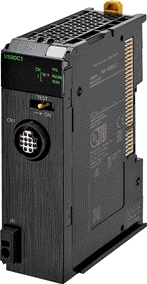 |
RFID Units | V680 series | 1 | NX-V680C1 |
 |
2 | NX-V680C2 |
Specifications
V680S-series
RF tag (2-kbyte Memory)
| Item | V680S-D2KF67 | V680S-D2KF67M | V680S-D2KF68 | V680S-D2KF68M |
|---|---|---|---|---|
| Memory capacity | 2,000bytes (user area) | |||
| Memory type | FRAM | |||
| Data retention | 10 years after writing (85°C or less) | |||
| Memory life | One trillion writes for each block
(85°C or less), Access frequency
2 : One trillion accessesThe number of accesses is the
total number of reads and writes. |
|||
| Ambient operating temperature | −20 to 85°C (with no icing) | |||
| Ambient storage temperature | −40 to 125°C (with no icing) | |||
| Ambient operating humidity | 35% to 85% | |||
| Degree of protection | IP68 (IEC 60529:2001), Oil resistance equivalent to IP67G (JIS C 0920:2003, Appendix 1)
2 . Oil resistance has been tested using a specific oil as defined in the OMRON test method. IPX9K (DIN 40 050) |
|||
| Vibration resistance | No abnormality after application of 10 to 2,000 Hz, 1.5-mm double amplitude, acceleration: 150 m/s², 10 sweeps each in X, Y, and Z directions for 15 minutes each | No abnormality after application of 10 to 500 Hz, 1.5-mm double amplitude, acceleration: 100 m/s², 10 sweeps each in X, Y, and Z directions for 11 minutes each | ||
| Shock resistance | No abnormality after application of 500 m/s², 3 times each in X, Y, and Z directions (Total: 18 times) | |||
| Dimensions (W×H×D) | 40 × 40 × 5 mm | 86 × 54 × 10 mm | ||
| Materials | Exterior: PPS resin | |||
| Weight | Approx. 11.5 g | Approx. 12 g | Approx. 44 g | Approx. 46 g |
| Metal countermeasures | None | Provided | None | Provided |
For details, refer to the User’s Manual (Cat. No. Z339).
RF Tag (8-kbyte Memory)
| Item | V680S-D8KF67 | V680S-D8KF67M | V680S-D8KF68 | V680S-D8KF68M |
|---|---|---|---|---|
| Memory capacity | 8,192 bytes (user area) | |||
| Memory type | FRAM | |||
| Data retention | 10 years after writing (85°C or less) | |||
| Memory life | One trillion writes for each block
(85°C or less), Access frequency
2 : One trillion accessesThe number of accesses is the
total number of reads and writes. |
|||
| Ambient operating temperature | −20 to 85°C (with no icing) | |||
| Ambient storage temperature | −40 to 125°C (with no icing) | |||
| Ambient operating humidity | 35% to 85% | |||
| Degree of protection | IP68 (IEC 60529:2001), Oil resistance equivalent to IP67G (JIS C 0920:2003, Appendix 1)
2 . Oil resistance has been tested using a specific oil as defined in the OMRON test method. IPX9K (DIN 40 050) |
|||
| Vibration resistance | No abnormality after application of 10 to 2,000 Hz, 1.5-mm double amplitude, acceleration: 150 m/s², 10 sweeps each in X, Y, and Z directions for 15 minutes each | No abnormality after application of 10 to 500 Hz, 1.5-mm double amplitude, acceleration: 100 m/s², 10 sweeps each in X, Y, and Z directions for 11 minutes each | ||
| Shock resistance | No abnormality after application of 500 m/s², 3 times each in X, Y, and Z directions (Total: 18 times) | |||
| Dimensions (W×H×D) | 40 × 40 × 5 mm | 86 × 54 × 10 mm | ||
| Materials | Exterior: PPS resin | |||
| Weight | Approx. 11.5 g | Approx. 12 g | Approx. 44 g | Approx. 46 g |
| Metal countermeasures | None | Provided | None | Provided |
For details, refer to the User’s Manual (Cat. No. Z339).
V680-series
RF Tag (1-kbyte Memory)
| Item | V680-D1KP54T | V680-D1KP66T | V680-D1KP66MT | V680-D1KP66T-SP |
|---|---|---|---|---|
| Memory capacity | 1,000 bytes (user area) | |||
| Memory type | EEPROM | |||
| Data retention time | 10 years after writing (85°C or less), 0.5 year after writing (85 to 125°C) Total data retention at high temperatures exceeding 125°C is 10 hours
2
After storing data at high temperatures, rewrite the data even if changes are not required. High temperatures are those exceeding 125°C up to 180°C. |
10 years after writing (85°C or less) | ||
| Write endurance | 100,000 writes for each block (25°C) | |||
| Ambient operating temperature (during transmission) |
−25 to 85°C (with no icing) | During RF Tag communications: −25 to 70°C (with no icing)Not during RF Tag communications: −40 to 110°C (with no icing) |
||
| Ambient storage temperature (during data backup) |
−40 to 125°C (with no icing) Heat resistance:1,000 thermal cycles each of 30 minutes at −10°C/150°C, High temperature storage: 1,000 hours at 150°C
2
150°C heat resistance: The heat resistance has been checked at 150°C for up to 1,000 hours, and thermal shock has been checked through testing 1,000 thermal cycles each of 30 minutes at –10/150°C. (Test samples: 22, defects: 0) 200 thermal cycles each of 30 minutes at −10°C/180°C, High temperature storage: 200 hours at 180°C
2
180°C heat resistance: The heat resistance has been checked at 180°C for up to 200 hours, and thermal shock has been checked through testing 200 thermal cycles each of 30 minutes at –10°C/180°C. (Test samples: 22, defects: 0) |
−40 to 110°C (with no icing) | ||
| Ambient operating humidity | 35 to 95% | |||
| Degree of protection |
IP67 (IEC 60529:2001) Oil resistance equivalent to IP67G(JIS C 0920:2003, Appendix 1)
2
Oil resistance has been tested using a specific oil as defined in the OMRON test method. |
IP68 (IEC 60529:2001) Oil resistance equivalent to IP67G(JIS C 0920:2003, Appendix 1)
2
Oil resistance has been tested using a specific oil as defined in the OMRON test method. |
IP67 | |
| Vibration resistance | No abnormality after application of 10 to 2,000 Hz, 1.5-mm double amplitude, acceleration: 150 m/s², 10 sweeps each in X, Y, and Z directions for 15 minutes each |
|||
| Shock resistance | No abnormality after application of 500 m/s², 3 times each in X, Y, and Z directions (Total: 18 times) | |||
| Appearance | 20 dia. × 2.7 mm | 34 × 34 × 3.5 mm | 95 × 36.5 × 6.5 mm (excluding protruding parts) |
|
| Materials | PPS resin |
Exterior: PFA fluororesin RF Tag filling: PPS resin |
||
| Weight | Approx. 2 g | Approx. 6 g | Approx. 7.5 g | Approx. 20 g |
| Metal countermeasures | None | None | Provided | None |
For details, refer to the User's Manual (Cat. No. Z339).
RF Tag (1-kbyte Memory with High-temperature Capability)
| Item | V680-D1KP58HTN |
|---|---|
| Memory capacity | 1,000 bytes (user area) |
| Memory type | EEPROM |
| Data retention |
10 years after writing (85°C or less), 0.5 year after writing (85 to 125°C) Total data retention at high temperatures exceeding 125°C is 10 hours
2
After storing data at
high temperatures, rewrite the data even if changes are not required.
High temperatures are those exceeding 125°C up to 180°C. |
| Write endurance | 100,000 writes for each block (25°C) |
| Ambient operating temperature (during transmission) |
−25 to 85°C (with no icing) |
| Ambient storage temperature (during data backup) |
−40 to 250°C (with no icing) (Data retention: −40 to 125°C) |
| Ambient storage humidity | No restrictions. |
| Degree of protection |
IP67 (IEC 60529:2001) Oil resistance equivalent to IP67G (JIS C 0920:2003, Appendix 1)
2
Oil resistance
has been tested using a specific oil as defined in the OMRON test
method. |
| Vibration resistance | No abnormality after application of 10 to 2,000 Hz, 1.5-mm double amplitude, acceleration: 150 m/s², 10 sweeps each in X, Y, and Z directions for 15 minutes each |
| Shock resistance | No abnormality after application of 500 m/s², 3 times each in X, Y, and Z directions (Total: 18 times) |
| Materials | Exterior: PPS resin |
| Weight | Approx. 70 g |
For details, refer to the User's Manual (Cat. No. Z339).
Reader/Writer
EtherNet/IP, PROFINET
| Item |
V680S-HMD63-EIP V680S-HMD63-PNT |
V680S-HMD64-EIP V680S-HMD64-PNT |
V680S-HMD66-EIP V680S-HMD66-PNT |
|---|---|---|---|
| Dimensions (W×H×D) | 50 × 50 × 30 mm (excluding protruding parts and cables) |
75 × 75 × 40 mm (excluding protruding parts and cables) |
120 × 120 × 40 mm (excluding protruding parts and cables) |
| Power supply voltage | 24 VDC (−15% to 10%) | ||
| Consumption current | 0.2 A max. | ||
| Ambient operating temperature | −10 to +55°C (with no icing) | ||
| Ambient operating humidity | 25% to 85% (with no condensation) | ||
| Ambient storage temperature | −25 to 70°C (with no icing) | ||
| Ambient storage humidity | 25% to 85% (with no condensation) | ||
| Insulation resistance | 20 MΩ min. (at 500 VDC) between cable terminals and case | ||
| Dielectric strength | 1,000 VAC, 50/60 Hz for 1 min between cable terminals and case | ||
| Vibration resistance | No abnormality after application of 10 to 500 Hz, 1.5-mm double amplitude, acceleration: 100 m/s², 10 sweeps in each of 3 axis directions (up/down, left/right, and forward/backward) for 11 minutes each |
||
| Shock resistance | No abnormality after application of 500 m/s², 3 times each in 6 directions (Total: 18 times) | ||
| Degree of protection |
IP67 (IEC 60529: 2001) Oil resistance equivalent to IP67F (JIS C 0920: 2003, Appendix 1)
2
Oil
resistance has been tested using a specific oil as defined in the
OMRON test method. |
||
| Materials | Case: PBT resin, Filled resin: Urethane resin | ||
| Mass | Approx. 240 g | Approx. 390 g | Approx. 760 g |
| Installation method | Reader/Writer: Two M4 screws (Use a screw of 12 mm or more in length.) Branch cable joint: One M4 screws |
Four M4 screws (Use a screw of 12 mm or more in length.) |
|
| Host device communications interface | Ethernet 10BASE-T/100BASE-TX | ||
| Host device communications protocol | EtherNet/IP, PROFINET | ||
| Accessories | Instruction Sheet, Description of Regulations and Standard, IP address label | ||
The 0.5 m cable with two M12 connectors is attached to the Reader/Writer. The cable cannot be removed.
Modbus TCP
| Item | V680S-HMD63-ETN | V680S-HMD64-ETN | V680S-HMD66-ETN |
|---|---|---|---|
| Dimensions | 50 × 50 × 30 (excluding protruding parts) |
75 × 75 × 40 (excluding protruding parts) |
120 × 120 × 40 mm (excluding protruding parts) |
| Power supply voltage | 24 VDC (–15% to 10%) | ||
| Consumption current | 0.2A max. | ||
| Ambient operating temperature | –10 to 55°C (with no icing) | ||
| Ambient operating humidity | 25% to 85% (with no condensation) | ||
| Ambient storage temperature | −25 to 70°C (with no icing) | ||
| Ambient storage humidity | 25% to 85% (with no condensation) | ||
| Insulation resistance | 20 MΩ min. (at 500 VDC) between cable terminals and case | ||
| Dielectric strength | 1,000 VAC, 50/60 Hz for 1 min between cable terminals and case | ||
| Vibration resistance | No abnormality after application of 10 to 500 Hz, 1.5-mm double amplitude, acceleration: 100 m/s², 10 sweeps in each of 3 axis directions (up/down, left/right, and forward/backward) for 11 minutes each |
||
| Shock resistance | No abnormality after application of 500 m/s², 3 times each in 6 directions (Total: 18 times) | ||
| Degree of protection |
IP67 (IEC 60529: 2001) Oil resistance equivalent to IP67F (JIS C 0920: 2003, Appendix 1)
2
Oil
resistance has been tested using a specific oil as defined in the
OMRON test method. |
||
| Materials | Case: PBT resin, Filled resin: Urethane resin | ||
| Mass | Approx. 120 g | Approx. 270 g | Approx. 640 g |
| Installation method | Two M4 screws (Use a screw of 12 mm or more in length.) |
Four M4 screws (Use a screw of 12 mm or more in length.) |
|
| Host device communications interface |
Ethernet 10BASE-T/100BASE-TX | ||
| Host device communications protocol |
MODBUS TCP | ||
| Accessories | Instruction sheet, Description
of Regulations and Standard, IP address label, Ferrite core
2
Provided
only with the V680S-HMD66-ETN. |
||
System configuration
The below shows the configuration for 1 to 1 connection. Multiple Reader/Writers can be connected by using a switching hub.
EtherNet/IP, PROFINET
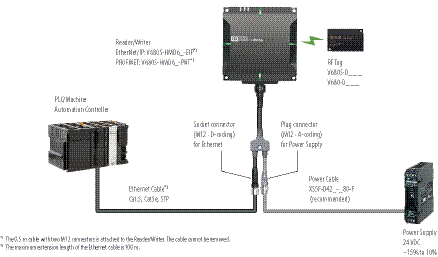
Modbus TCP
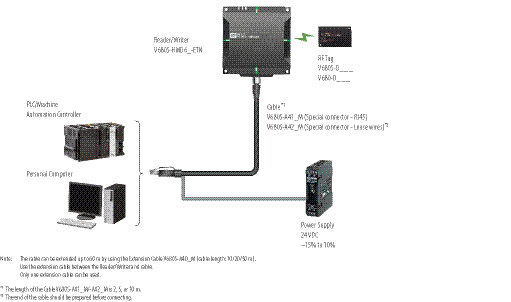
Precisa de ajuda?
Estamos aqui para ajudar! Contacte-nos e os nossos especialistas irão ajudá-lo a encontrar a melhor solução para a sua empresa.
Contactar V680/V680S
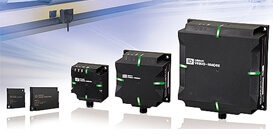
Obrigado por ter feito o seu pedido. Entraremos em contacto consigo logo que possível.
Temos experienciado dificuldades técnicas. O seu pedido não foi submetido com sucesso. Por favor aceite as nossas desculpas e tente novamente mais tarde. Detalhes: [details]
DownloadOrçamento para V680/V680S
Através deste formulário pode pedir um orçamento para o produto que escolheu. Por favor complete os campos marcados com *. Os seus dados serão tratados confidencialmente.

Obrigado por ter pedido uma cotação. Enviaremos a respectiva informação logo que possível.
Temos experienciado dificuldades técnicas. O seu pedido não foi submetido com sucesso. Por favor aceite as nossas desculpas e tente novamente mais tarde. Detalhes: [details]
Download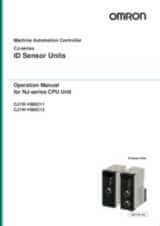
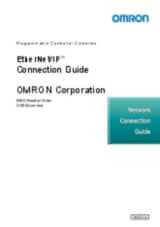
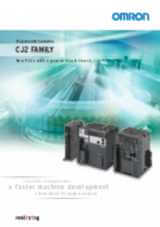
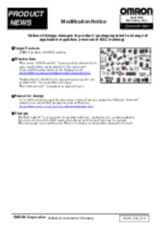

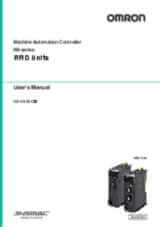
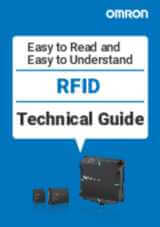
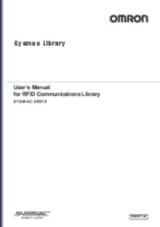
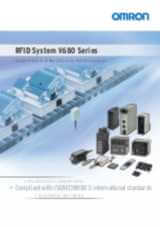
_operation_manual_en.jpg)
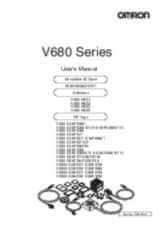
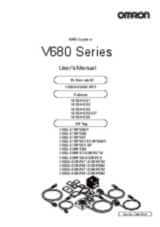
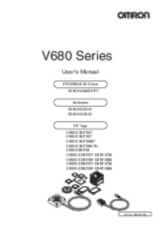
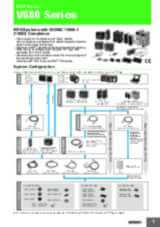
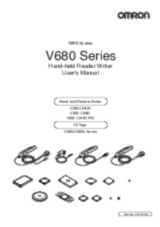
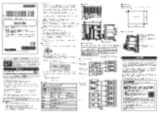
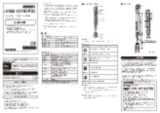
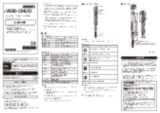
regulations_and_standard_instruction_sheet_en.jpg)
